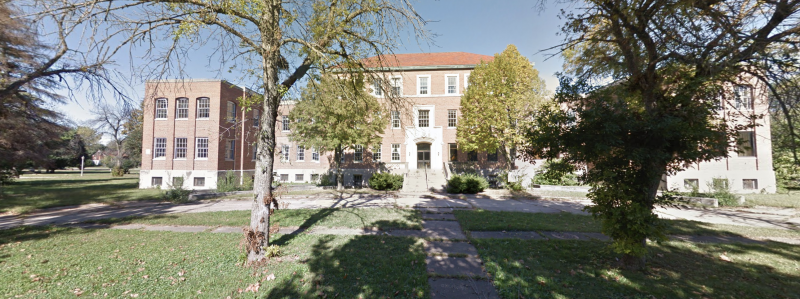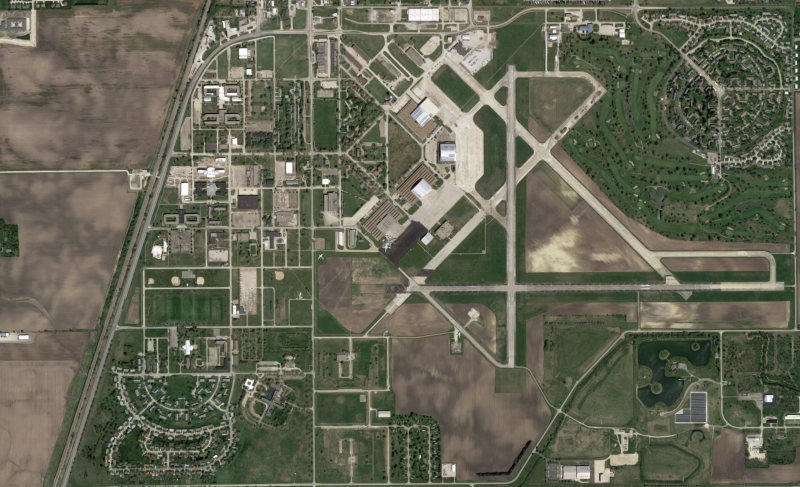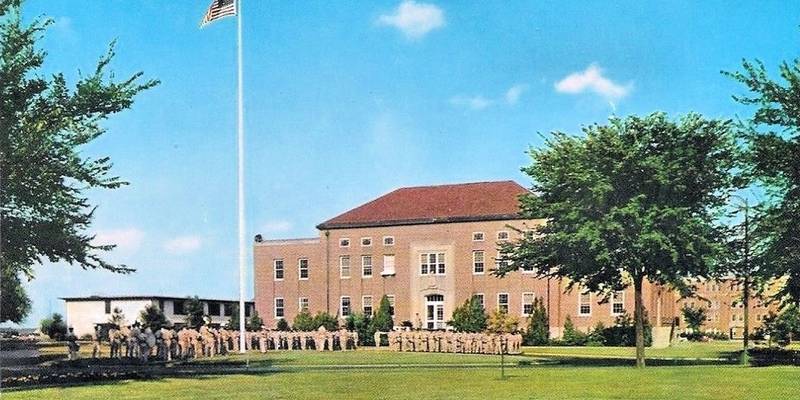Base Realignment and Closure (BRAC) is a strategic process enacted by the US Military to streamline resources in the form of shedding bases deemed to be unnecessary, especially following the Cold War. This process allows for better equipment and resources at centralized locations and returns the land of redundant facilities to their respective locales. Since the program began, over 350 installations, many from wartime building booms, have been closed to varying levels of success. Our local Chanute Air Force Base was part of the first round of proposed closures in 1988, eventually leading to its 1993 decommissioning.
One memory from my childhood I have is playing in a lacrosse tournament in middle school at a former air base: the Glenview Naval Air Station, which closed in 1995, about 15 years before I played lacrosse there. When I played there, I never knew it was once a base, it was a town unto itself called The Glen. Houses, shops, schools, churches, lakes and parks now cover the vast former airfield. Similar examples exist outside of Orlando, Denver, and San Diego. Atlanta’s Fort McPherson is also planned to undergo a similar reintegration into civilian society. So why not Chanute? Why are parts of Rantoul’s Chanute AFB still vacant and decaying?

Well, location is the biggest hindrance for Chanute. All of the successful redevelopments of these former military installations have been either in or near major urban areas. Chanute, on the other hand, is not near a major city, and about a half-hour drive from Champaign-Urbana. Though some buildings have found new life as another use, much of Chanute is still abandoned. Haunting images of the air base have made their rounds on the internet. Similarly, Rantoul has dealt with major issues since the base’s closing–its current population is only half of what it was in the 1970s (it should be noted that military personnel are also counted in the census data, but the loss of half of a town’s population anywhere can bring about serious issues in the local economy).
So what can be done with Chanute? It is probably too far for a University of Illinois satellite campus, the residential demand is not there, Illinois’ notoriously empty coffers all but ensures there will be no funding for redevelopment at the state level, and the buildings are old. This is a challenge 25 years in the making and seeing the historic facility decay breaks the heart of an aspiring urban planner.

When viewed from above, it is easy to see the challenges of a redevelopment of this scope.
Let’s think outside the box. The wide variety of homes and communal spaces are conducive to developing a city within the Village of Rantoul, perhaps an arts community to bolster the creative presence of our region. A mixture of the visual, performing, and sculptural arts would be a cultural asset for the region as a whole and the quaint brick buildings of the tree-lined base would be a wonderful setting. Other small Illinois towns like Quincy and Galena have prospered by supporting a vibrant arts scene. The community-based Rantoul Theater Group has capitalized on the space already.
Though some areas of the base face soil contamination, other areas can be used for community agriculture. With the presence of the nearby University, inventive and experimental forms of agriculture could be employed here, which could supply the region’s growing restaurant scene, a scene that’s truly remarkable given the area’s relatively small population.
As we enter the age of sustainability, the area could even become a lab for studying green energy solutions. Aside from a small solar farm, the University has no real place to comprehensively study, research and harness green energy, which seems odd for such a large flagship University intent on reducing its carbon footprint. Maybe South Rantoul can be that place and become a model and laboratory for sustainable energy and living.
Or maybe I’ve been too quick to follow Daniel Burnham’s “make no small plans” philosophy. Chanute’s property is far from being completely vacant, it hosts a school, dental center, assisted living, homes, and aviation facilities. Maybe finding the uses that best serve the local community piecemeal is the way to go. Medical facilities, senior housing, and other services may eventually occupy the remaining space, but how quickly remains uncertain. An MTD connection and eventual service to Rantoul would improve the viability of the site if the political will exists. But with the aforementioned challenges omnipresent, one thing remains clear: Chanute is a tricky issue, no matter which path we choose to approach it with.
Let me also make another thing clear before signing off: Rantoul is adapting, in recent years it has seen the opening of a new hotel and a massive facility for Vista Outdoor. Though it is still reeling from the loss of Chanute, Rantoul is far from being complacent. Chanute will not be coming back, so we should move forward and have a community and regional dialogue about what we want our former air force base to become. I’m sure you’ve had ideas. Every day we waste, Chanute’s abandoned structure move farther from a repairable state.








